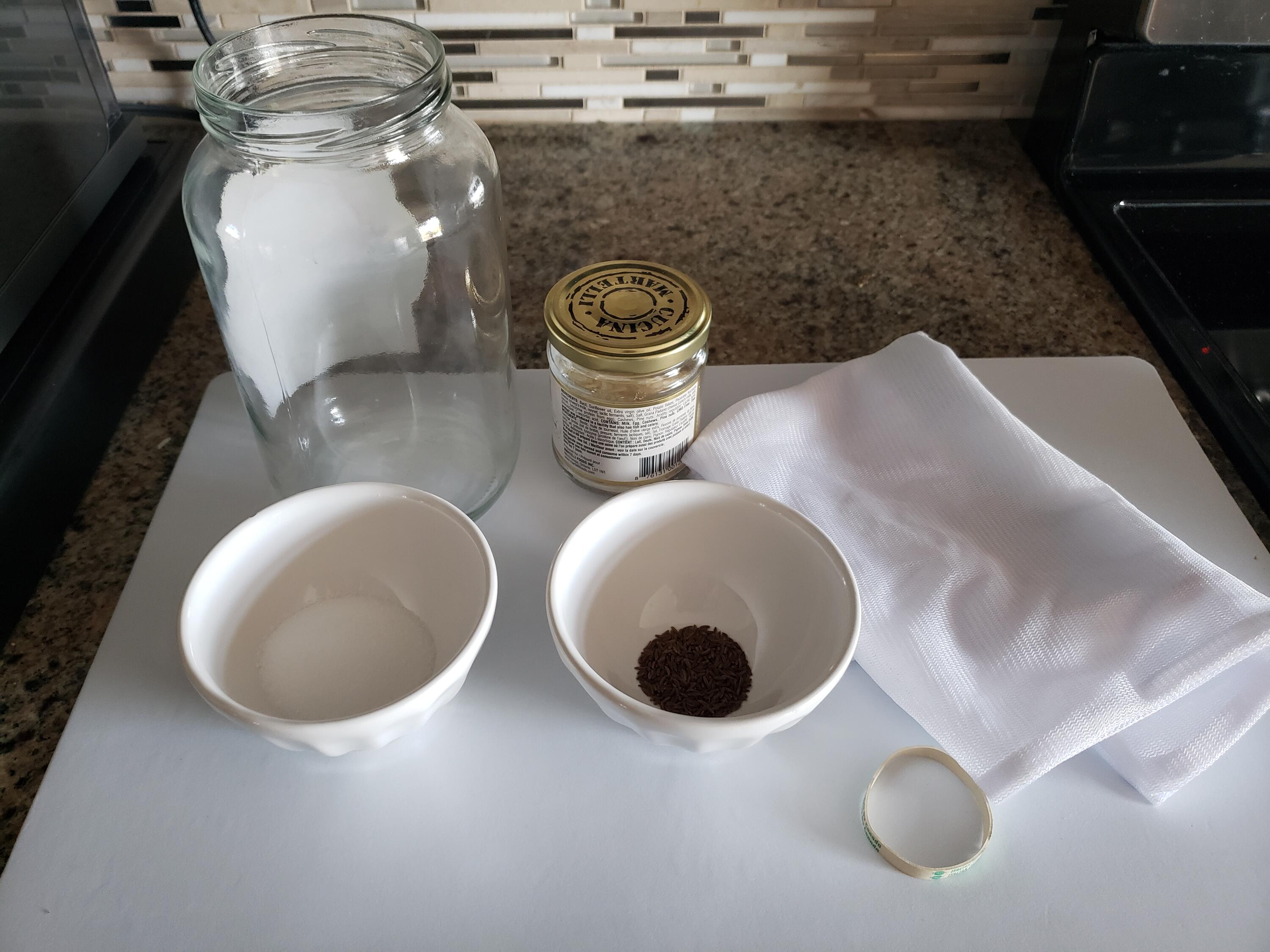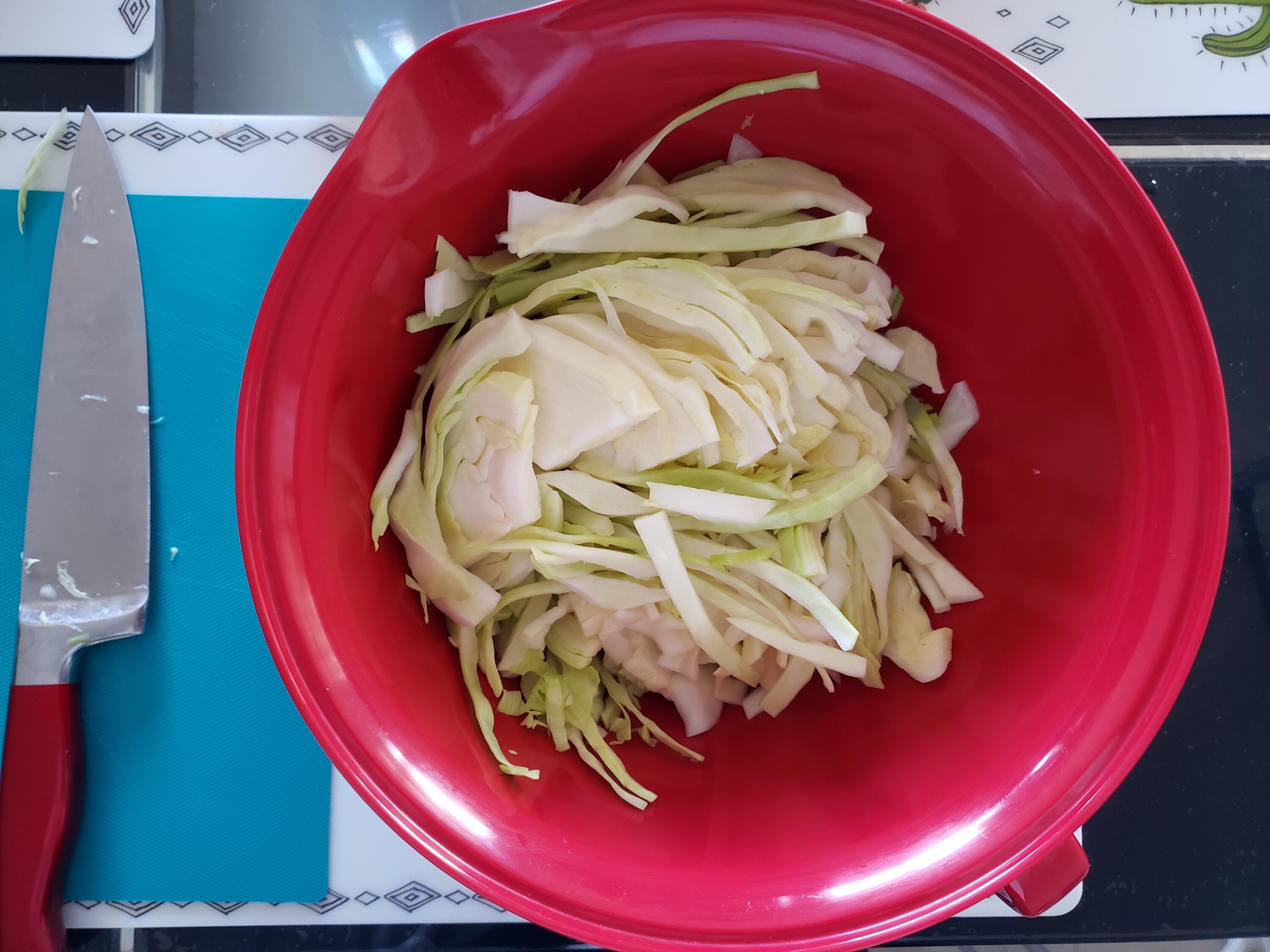
Let’s make sauerkraut at home!
Fermentation is an old method traditionally used to preserve food beyond their shelf-life. In addition to preserving the food, the fermentation process also alters the food into something incredibly tasty and gives it additional health benefits. Today we will be making sauerkraut. Sauerkraut is fermented cabbage — it’s both easy to make and very nutritional.
How is cabbage (sauerkraut) fermented?
Sauerkraut is made possible by the action of (hard-working) microbes through a process called lactic-acid fermentation. Let me explain: There are good bacteria that can be found on the surface of the cabbage, one relevant bacterium here is called Lactobacillus. You might be familiar with Lactobacillus if you’ve ever had yogurt (Lactobacillus is used in making yogurt and cheese). When the cabbage is mixed with brine (high salt solution) and allowed to sit in an oxygen-free environment, Lactobacillus begins to convert the sugar in the cabbage into lactic acid. Lactic acid gives sauerkraut its distinctive sour taste and prevents the growth of harmful bacteria.
Lactobacillus bacteria are the active workers who make sauerkraut (and other fermented products) possible. These beneficial bacteria occur naturally in many places including fruits, vegetables, and even on our skin! Lactobacillus has two main properties that make them useful for fermentation:
- They survive in an oxygen-free environment (anoxic), as in when submerged under brine in mason jars
- They tolerate high salt well, unlike many other bacteria (including the bad ones)
These properties allow us to ferment the cabbage without killing the Lactobacillus. Lactic acid fermentation allows the good bacteria to stay and do their thing while at the same time discouraging the bad bacteria.
How long does it take for lactic-acid fermentation to kick in?
For a small-sized batch (quarter cabbage head) like the one we’re making today, the minimum time needed for fermentation is approximately three days. If you leave the sauerkraut after those three days, it will continue to ferment and become yummier! The rule of thumb when it comes to sauerkraut is to just keep tasting the sauerkraut until the taste is to your liking. The sauerkraut itself should be safe to eat at every stage of the process, so there is no real ‘fermentation time’.
Can fermentation go wrong?
Simple answer — not really! You may see bubbles or white ‘froth’ on the surface of your sauerkraut, but these are all signs of fermentation taking place.
It is also possible to see mould growing on the surface of your sauerkraut. If you see mould, don’t panic! Your sauerkraut is still likely good (it’s preserved by the lactic acid produced by Lactobacillus). Mould forms when the cabbage isn’t fully submerged under brine or if it’s too warm in your kitchen. What you can do here is scoop off the mould and proceed with fermentation. That said, it’s important to use your best judgment when fermenting food. If something tastes or smells ‘mouldy’ or gross, trust your senses and toss the sauerkraut.
Ready to make sauerkraut? Let’s do it.
What you’ll need (ingredients):
- Mason jar
- Glass weights
- Lid (see note below)
- Medium-sized green cabbage (~ 3 lbs)
- 1 ½ tablespoons salt
- 1-2 tablespoon caraway seeds (optional)
How to make Sauerkraut (instructions):

- Make sure everything is clean - Wash your mason jars, work surface, utensils, and your hands with soap and water.
- Slice the cabbage - Remove the outer leaves and cores from the cabbage. Slice the cabbage into thin, ribbon-like, slices (you might want to ask an adult to help you with this step).
- Add some salt - Place the sliced cabbage in a large, clean, bowl. Sprinkle about 1 ½ tablespoons of salt over the cabbage. Knead and squeeze the cabbage/salt with your hands for approximately five to ten minutes. At first, it won't seem like nothing is happening but be patient. After a few minutes, you should notice that the cabbage is releasing liquid. Continue kneading and squishing the cabbage until there is enough liquid brine to cover the cabbage in the jar. Now you can add the caraway seeds if you want to use them for added flavor.
- Move the cabbage to your jar - Stuff the cabbage tightly into a clean jar. Pour liquid brine from the bowl into the jar. If required, add a little water to make sure the brine liquid covers the cabbage entirely.
- Add glass weight and cover the top - Add the glass weights and cover the top of the jar (preferably using a clean piece of cloth). If you are just using a mason jar, you can do this by adding a smaller jar that fits inside the lid of the mason jar and covering both jars with a cloth and a rubber band. The glass weight keeps the cabbage under the brine, which keeps the fermentation environment oxygen-free.
- Wait for Lactobacillus to start the fermentation process - Fermentation will begin within a day or so and will take between two and five weeks depending on the conditions in the fermentation container. For the first few days, take a look at your mason jar, you’ll want to look for signs of Lactobacillus ‘activity’. Bubbling and foaming usually begin within about three days, depending on the temperature of your kitchen. And once you see bubbles forming (carbon dioxide being released), you’ll know that fermentation is underway. When a week passes, check for taste. Taste is the best measure here, so check it often and stop the fermentation process when you get the desired taste. Also always make sure to keep the jar covered with a clean cloth. This will allow airflow but prevent dust from getting into your sauerkraut.
Note: It is normal to see bubbles, white ‘froth’, or foam on top during the fermentation. If you see white ‘froth’, you can just scoop it out. You shouldn't see any actual mould, though. If you do, scrape it off the top, and make sure the rest of the cabbage is fully submerged under water (brine).
Once fermented, sauerkraut can be eaten right away, or you can store it in the fridge.
How do you know when fermentation is done, and the sauerkraut is ready to eat?
Fermentation is complete when your sauerkraut tastes pleasantly sour. So, if you’ve noticed signs of active fermentation, like bubbles, and it smells pleasantly sour, then your sauerkraut is ready for eating. You can also continue to let the cabbage ferment, so it develops a ‘rich’ flavor. And just move it to the fridge when it tastes right to you.
We would love to share this experience with you! Take a pic of your results and tag @WaterlooSci on Instagram or Twitter.